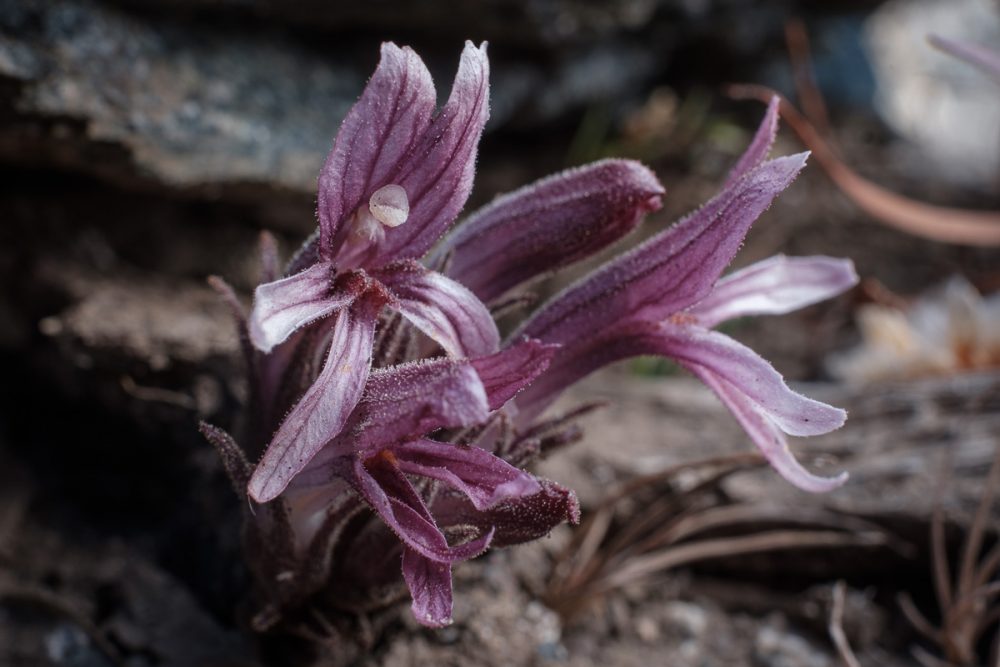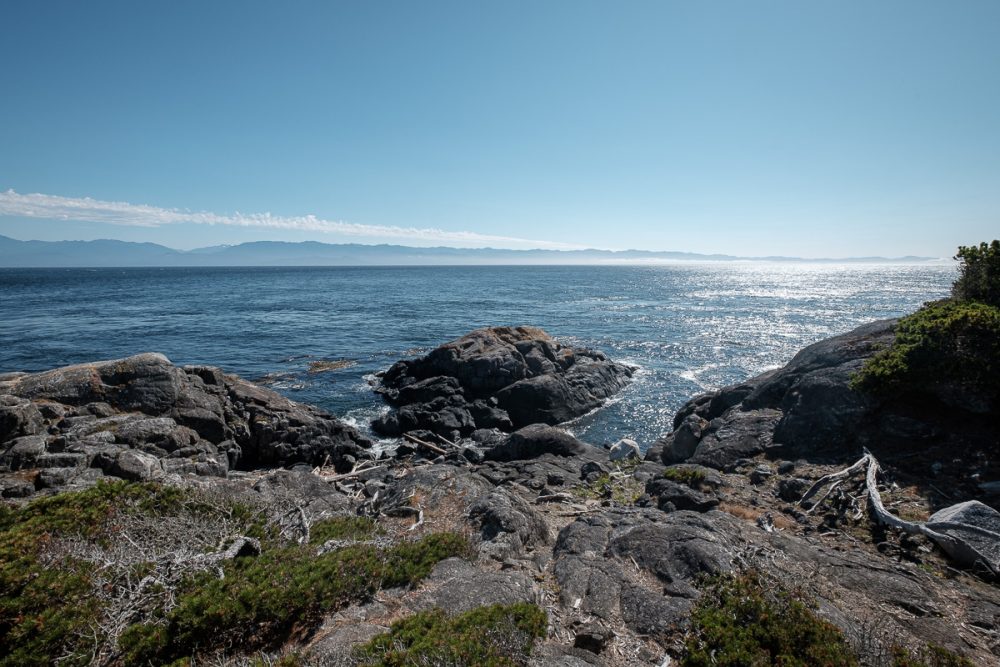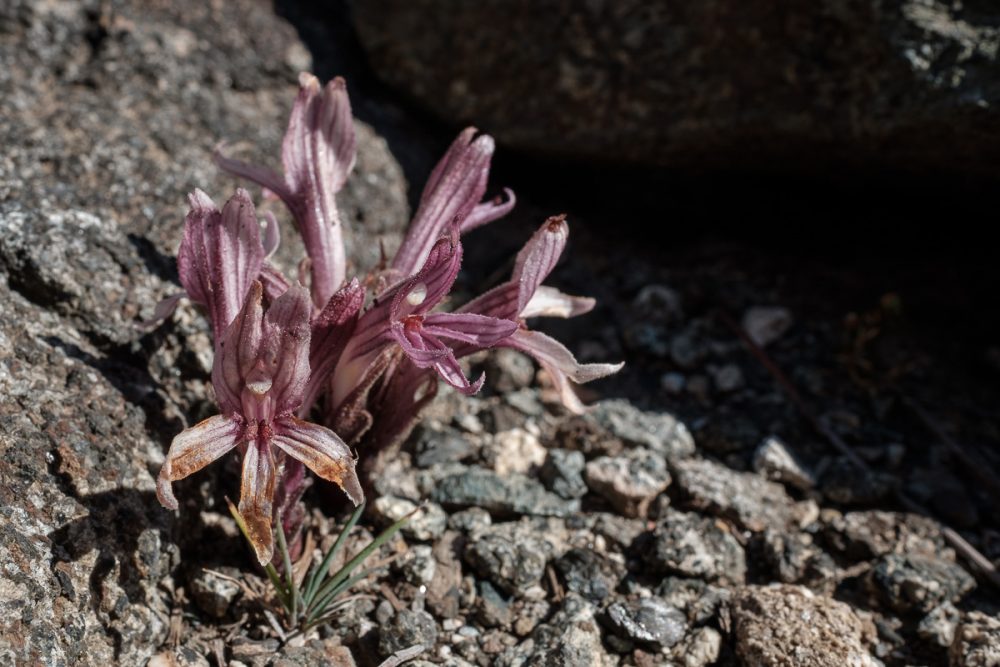I’m not sure if I’ve seen California broomrape (Orobanche californica) on Vancouver Island before so when I saw a few plants on the rocky shoreline in East Sooke Regional Park I was pretty excited. Broomrapes are very interesting parasitic plants that are often overlooked because of their small size. And while I have seen naked broomrape fairly frequently over the years, this plant was clearly something different.

Because they are parasitic, broomrapes lack both chlorophyll and noticeable leaves. Like naked broomrape, California broomrape is holoparasitic and gets nutrients and water from the roots of nearby host plants. Like other broomrapes, noting physical appearance, proximity to possible host plants, and habitat is important in identifying this plant to species.
A Coastal Parasite
There are a number of records of California broomrape in British Columbia. Most of those records are in southern Vancouver Island and the Gulf Islands. In fact, the plants I photographed appear to be from the same location where, according to the Eflora range map, John Pinder-Moss collected specimens for the Royal BC Museum Herbarium back in 1993. I found these plants growing close to the ocean just east of Beechey Head.
While most of the records for this species are from southern Vancouver Island, there are some from other locations further north including at Kin Beach in the Comox Valley. California broomrape grows from British Columbia south along the coast through Washington, Oregon and California. Other subspecies grow in different habitats and in association with different host plants.

California broomrape is parasitic on a number of different host plants. As a result, identifying the host plant is an important first step in identifying the subspecies of broomrape. Typically, host plants are in Asteraceae. In this case, this broomrape is likely Orobanche californica ssp. californica because of its coastal location and association with Pacific gumweed. In British Columbia, silver burweed (Ambrosia chamissonis) is another potential host plant.

Identifying California Broomrape
Unlike naked broomrape, this species of broomrape has a cluster of flowers rather than a single flower at the end of a stem. The flowers are light pinkish, yellow, or dark pinkish-purple in colour. Often the petals are starkly veined. Up to twenty tube-like flowers emerge from a thick root and form a distinctive cluster. The flower cluster is between 5 to 35cm in height. However, all of the plants that I observed were at the short end of this range.
When the flowers dry, the petals turn a reddish brown colour and the cluster is harder to find. Like other broomrapes, this species has no noticeable leaves. Because the flowers are small and often overlooked, a good approach to find California broomrape is to look for the host plant first and then search for the flowers nearby. The bloom period is August through to September.

Worth Looking For
Watch for California broomrape when you’re visiting coastal areas in British Columbia and the Gulf Islands this August. If you are in an area where Pacific gumweed grows, take some time to search for small clusters of pink flowers growing nearby. Once you find one plant you’ll likely find more!
It is definitely worth looking for this beautiful plant and noting areas where it hasn’t been seen before. In addition, it is also important to confirm that it is still growing where it has been been recorded in the past. Hopefully the fact that California broomrape was still doing well near Beechey Head, almost 30 years after a specimen had been collected, means that it is likely to be found there in the future. This unusual plant is easy to miss but a delight to find!